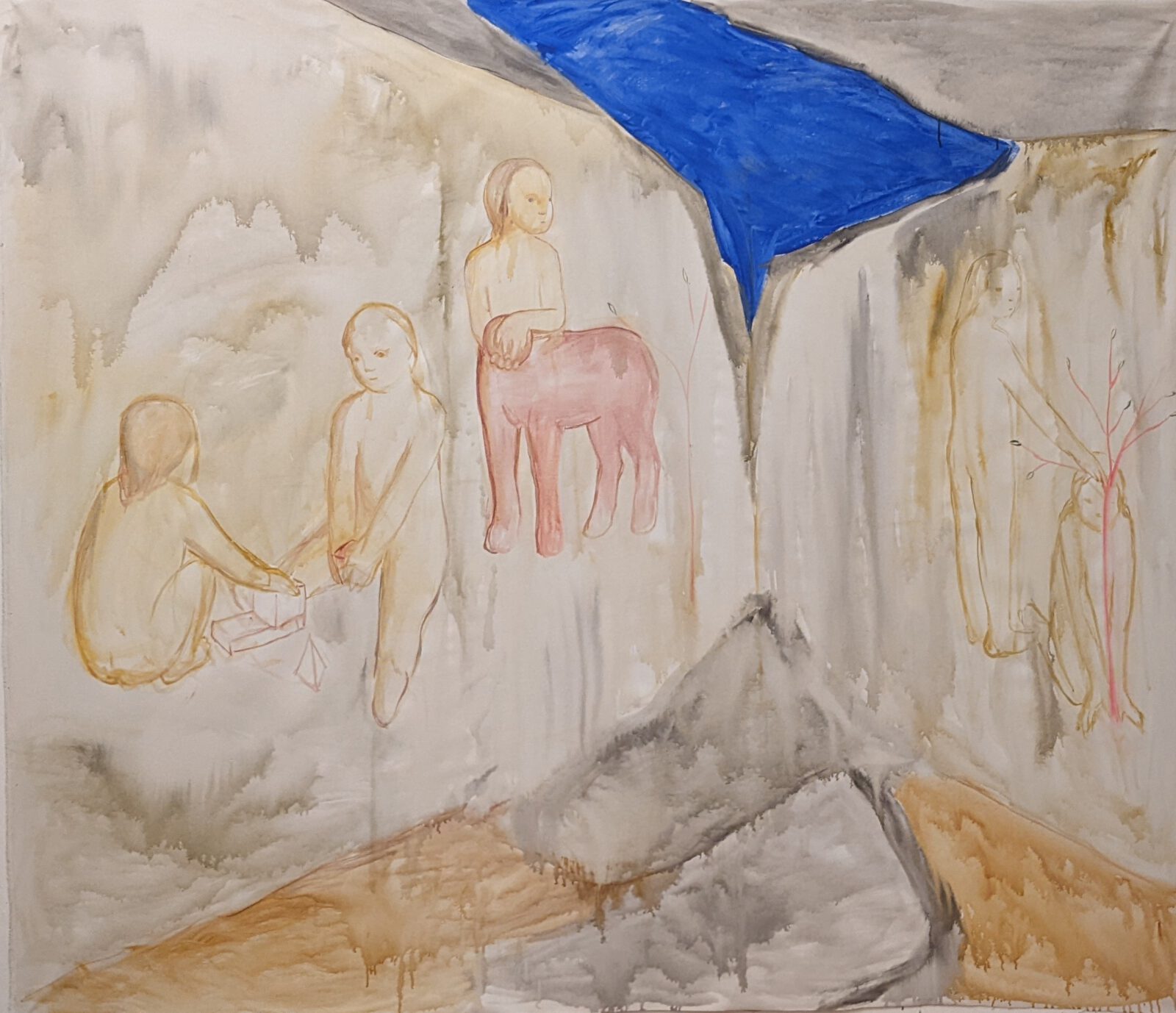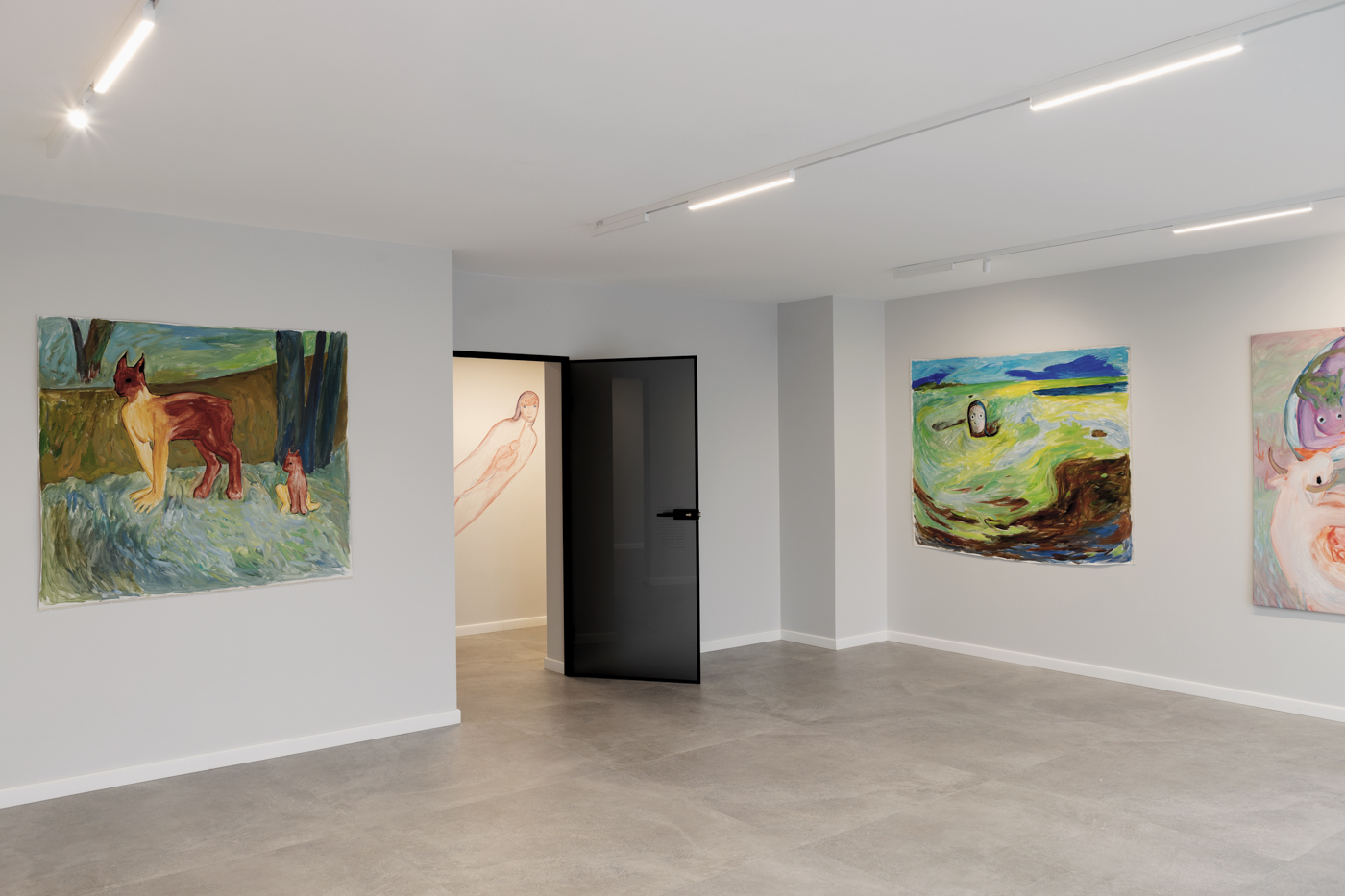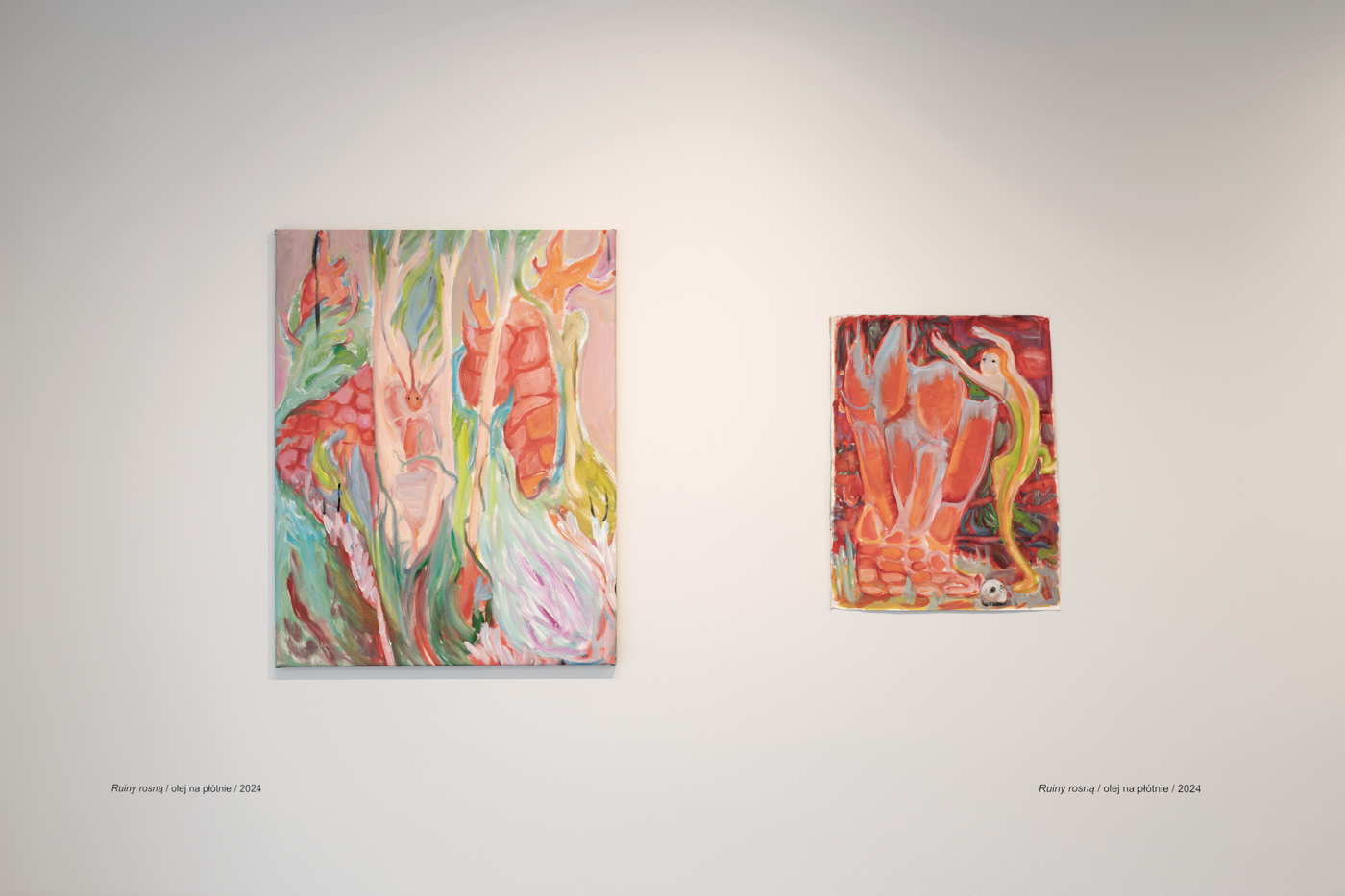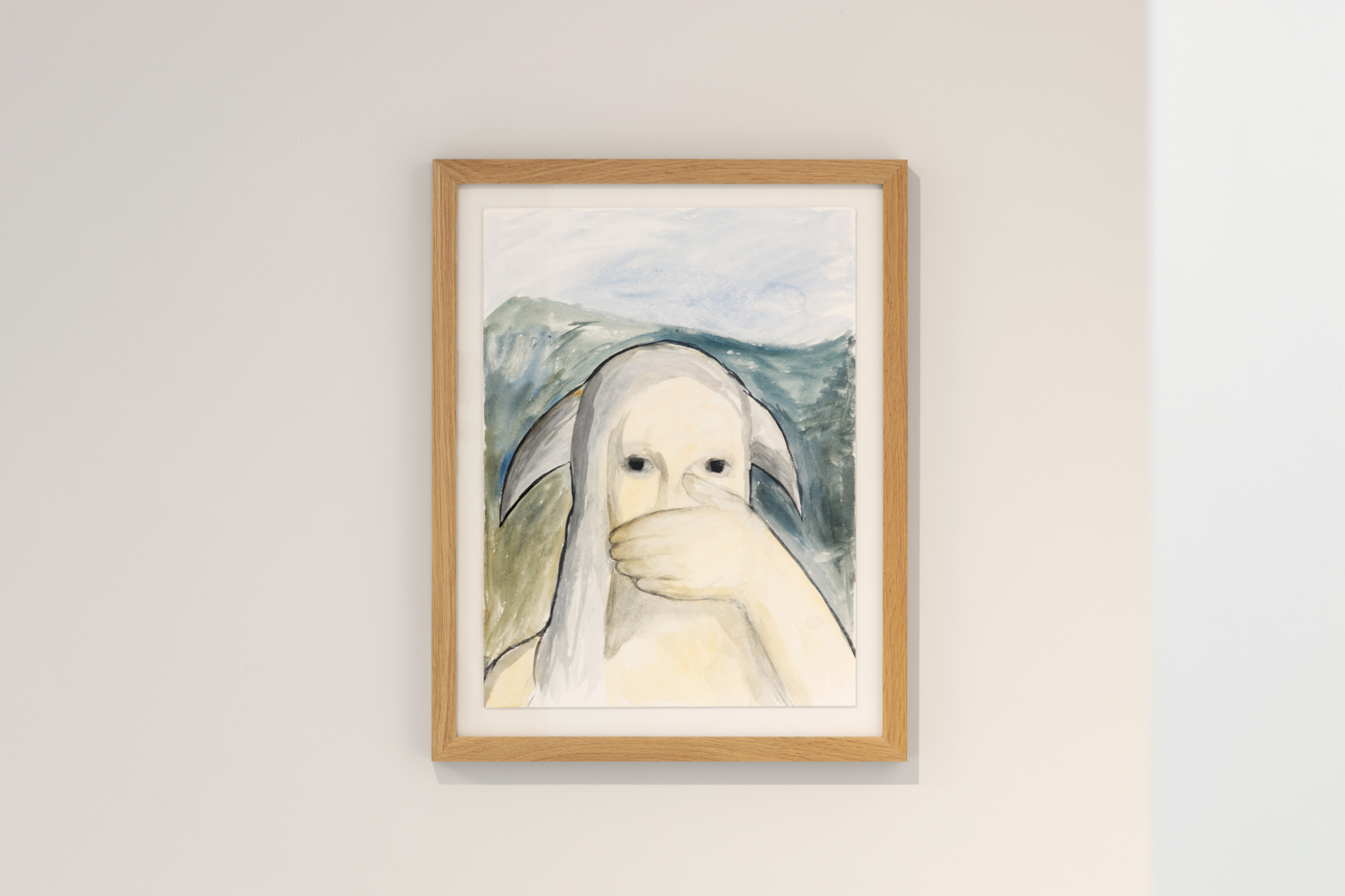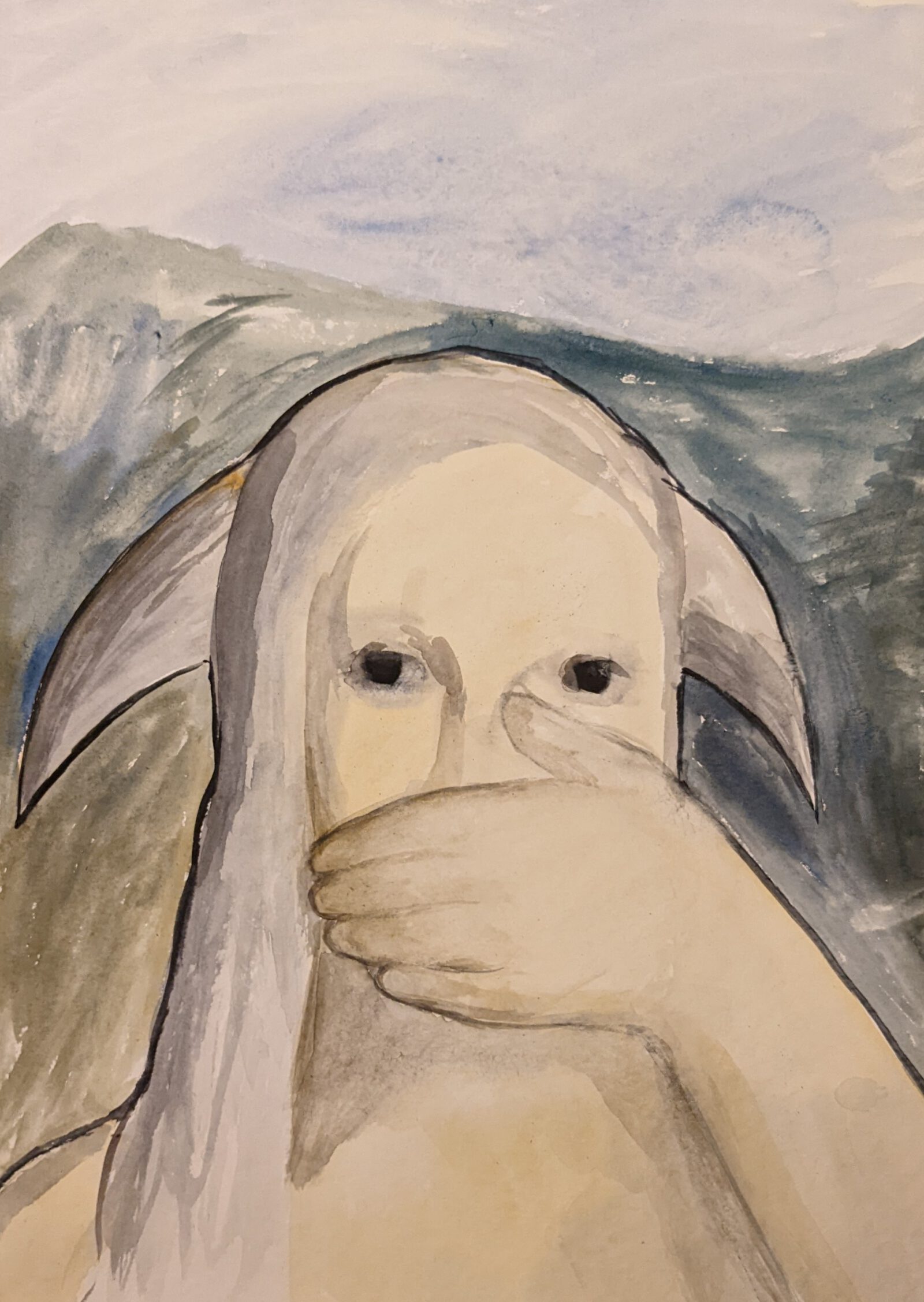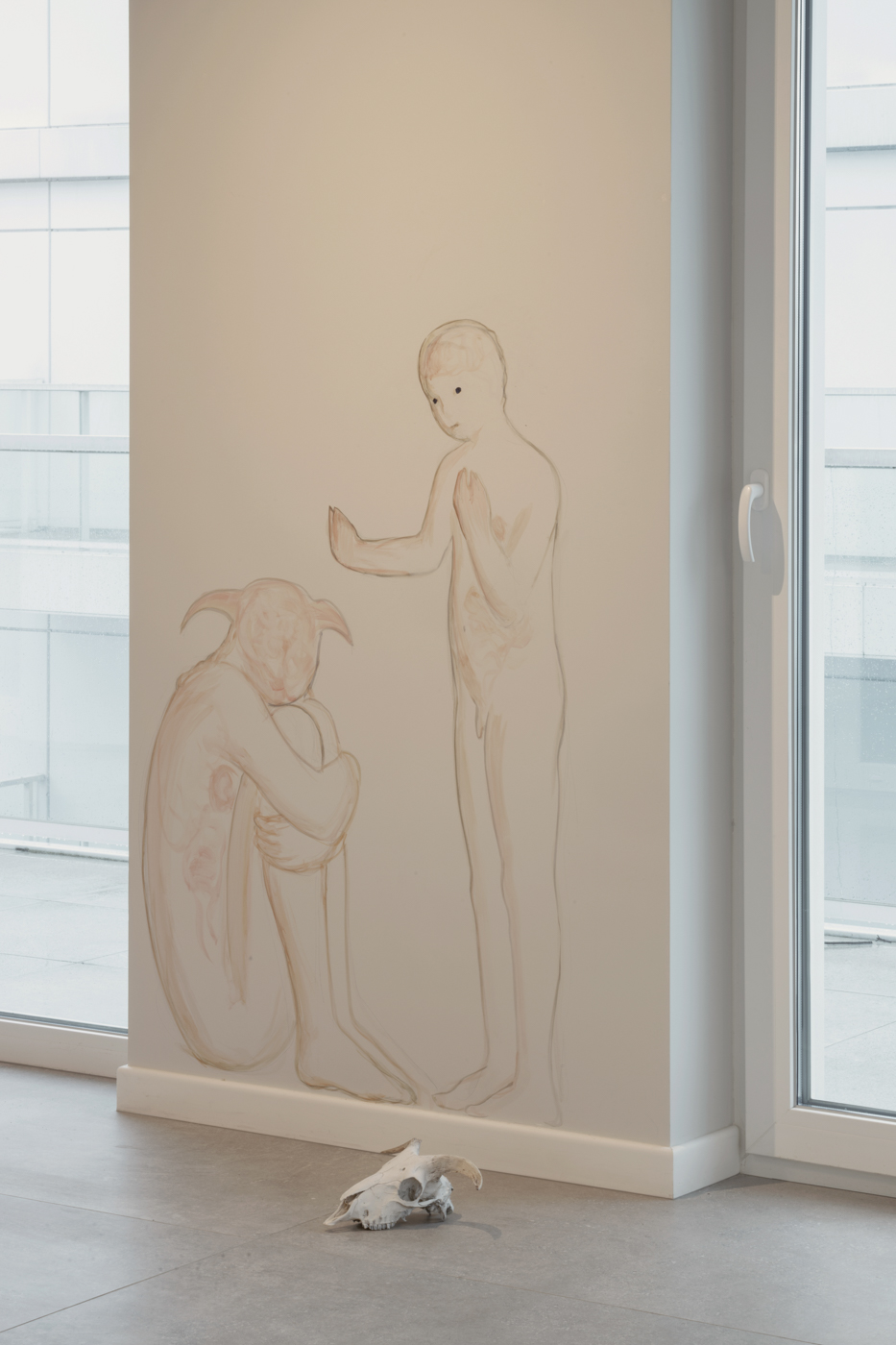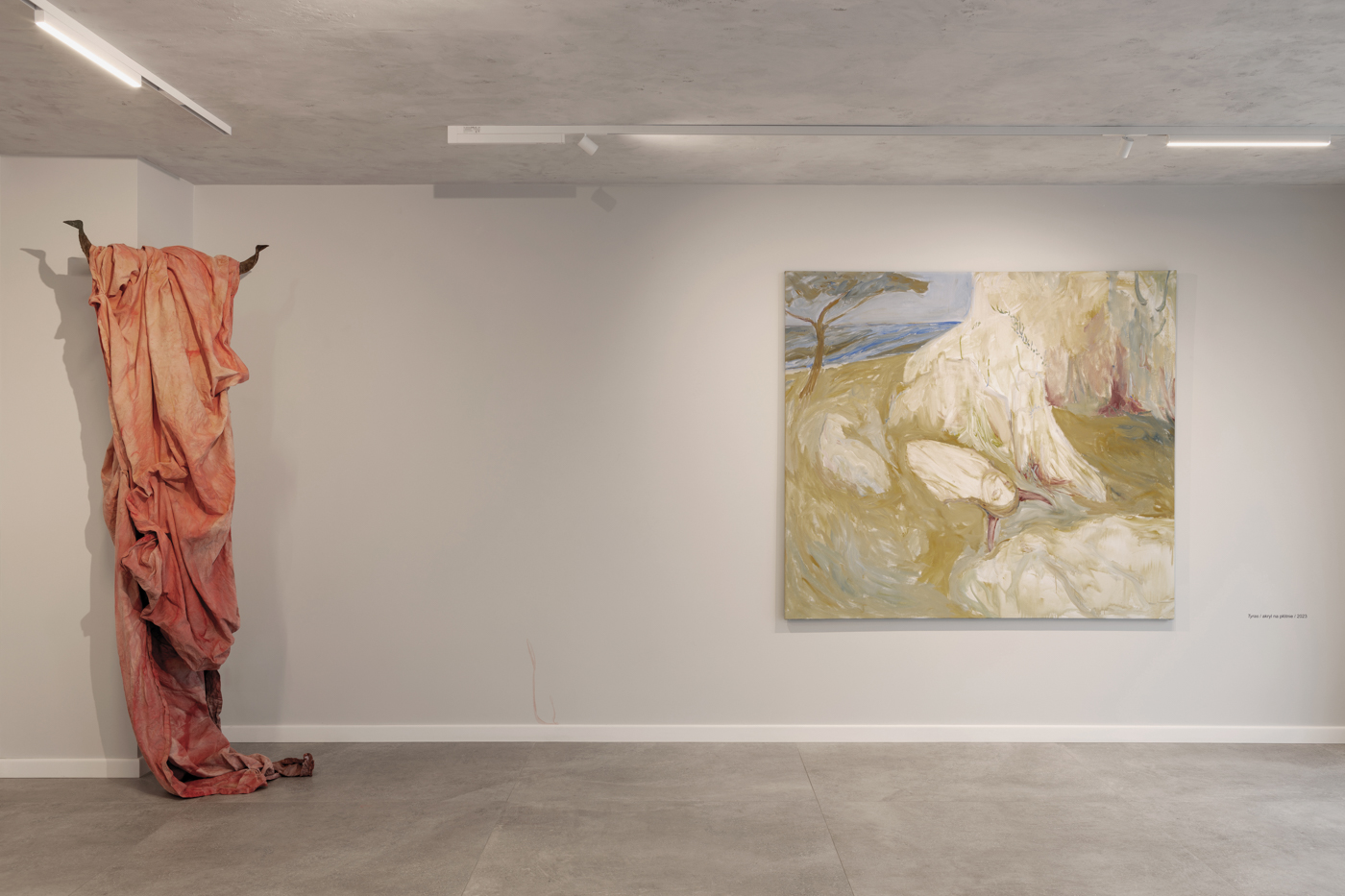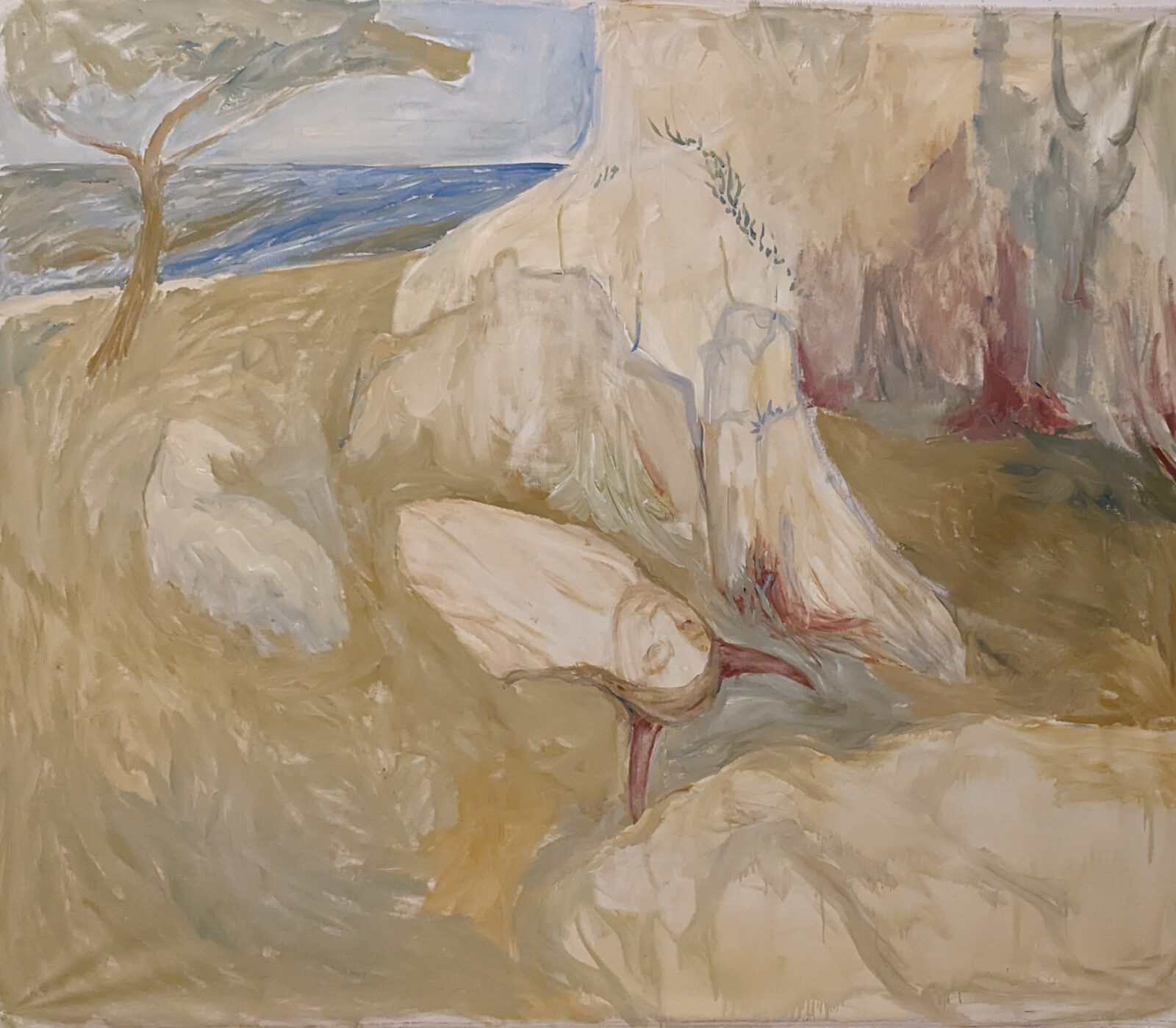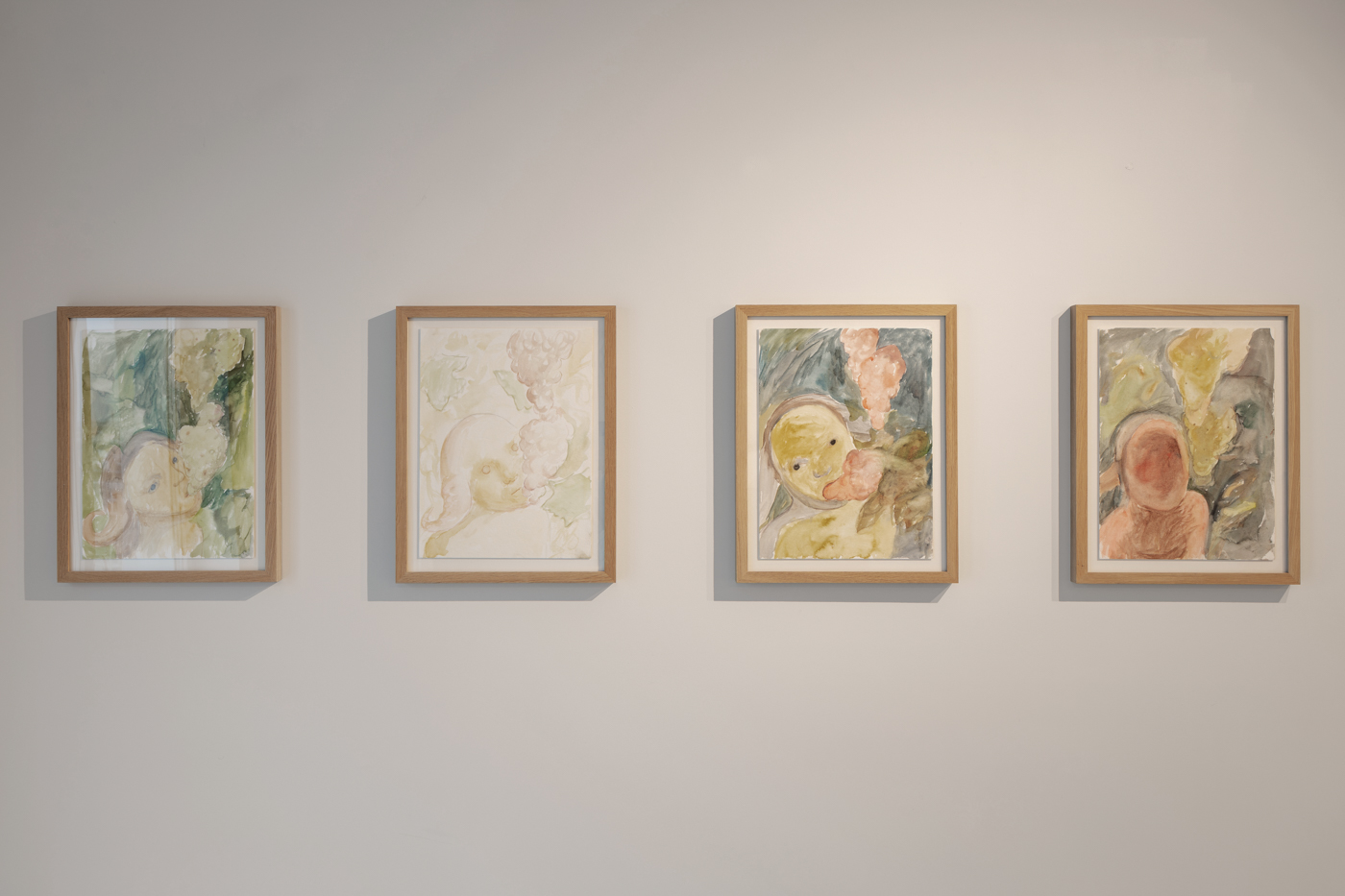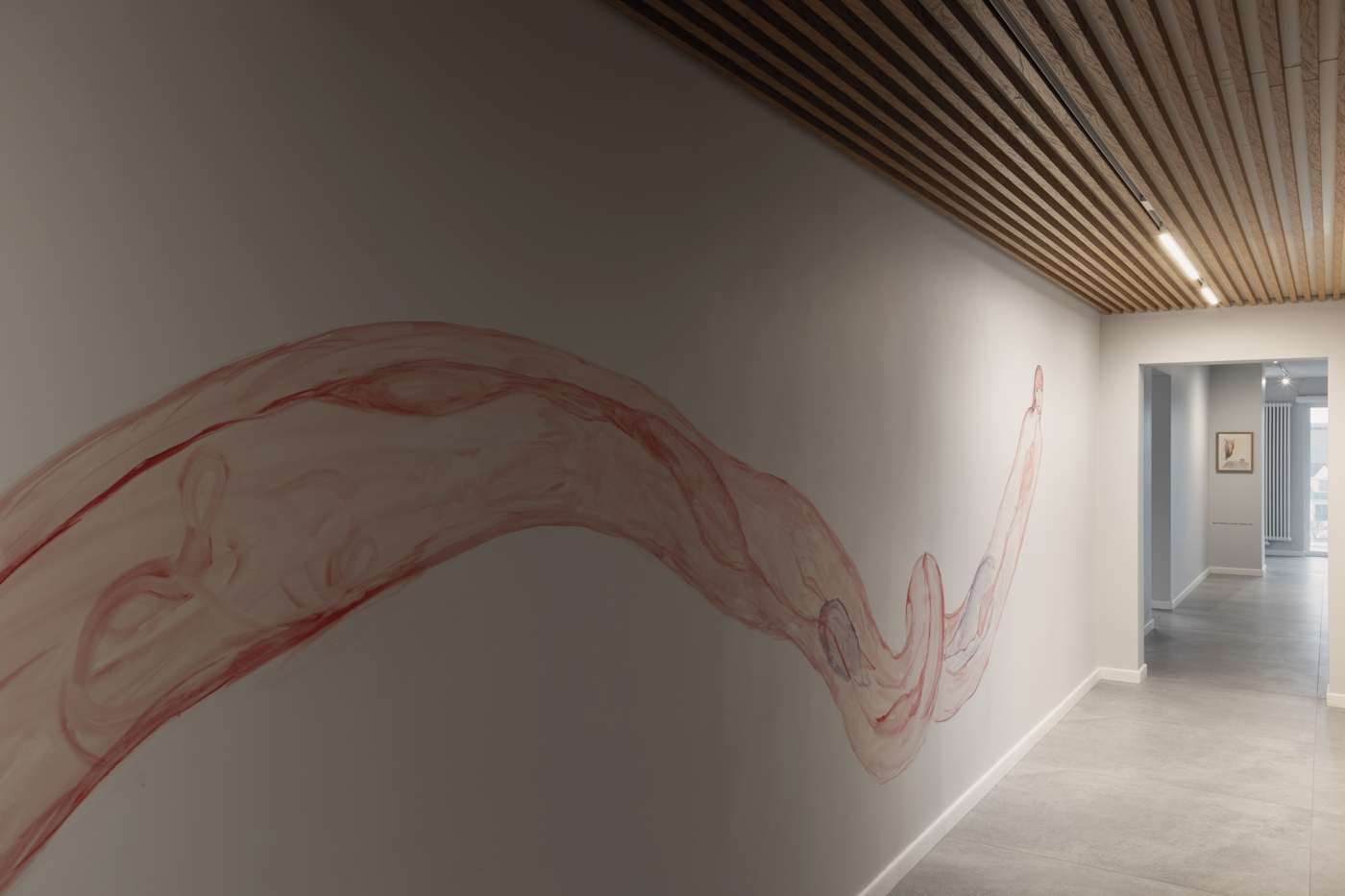Kateryna Lysovenko’s first solo exhibition at Krupa Gallery presents a new series of works, marking a significant change in the artist’s work.
Kateryna Lysovenko is constructing her works using a network of ideas, presented with a range of references. From classical mythology, tropes and motifs, to ideologies and contemporary events, as well as the way those are being reflected in images. Often locally addressing particular events, drawing a lot from the experience of Ukrainian people, her works tackle key problems of human condition and universal struggles.
ruins – we help them grow back
In Where Ruins Grow Like Plants or Child Body Lysovenko draws from the history of the ancient city of Tyras, which happened to pass from one country to another through the ages. From the 6th century BC, when the Greeks created this colony, the city and its fortress, had its name changed numerous times. Asprokastron in the Middle Ages, the Latin Album Castrum, Cetatea Albă in Romanian, Turkish Akkerman and Ukrainian Bilhorod – are just a few of its designations, usually meaning ‘white castle’. Subsequent walls had been erected on the predecessor’s foundations. And yet the place itself stayed local, and formed the identity of its inhabitants. The political ideologies driving each of the conquests served the walls in the end.
The new series focuses on the identity of the place and body of the city. The embodiment of the city is both an intellectual and painterly gesture. Lysovenko is aiming to revert the logic of oppression, by giving subjectivity to what remains in constant instability or crisis, and to those who are oppressed. Of the ruins she says that we help them grow back.
poetical, not epic
A significant change is developing throughout Where Ruins Grow Like Plants or Child Body. The gesture of repositioning the actors in traditional symbolic system, inherited from antiquity and continued through the ages, has given the artist means to question violence and oppression. But in the new works, Lysovenko goes one step further – she breaks free from where the Other still remained different, even despite being safe, but the eye/gaze of the Normal remained. Throughout the show, one can see this perspective disappearing, and being replaced by the point of view, and thus the narrative, of the subject. The stories told in the new works are not to be epic, but poetical. The same is reflected by the painterly language – throughout the show linear forms give way to more substantial and bodily ones.
Kateryna Lysovenko is a Ukrainian artist based in Vienna. She’s working in painting, using text, drawing and monumental painting as her other media.
Lysovenko is engaged in the study of the relationship between ideology and painting, as well as production of the image of the victim in politics and art. One of her most used means is the figure of the Other. In her work she is engaging traditions and inspirations ranging from antiquity to the present day. Lysovenko regards painting as a language that can be instrumentalized or liberated.
Since Russian full scale invasion on Ukraine, her works have become one of the most recognized images of the Ukrainian voice and perspective. But her historical and artistic reflection has a wider, universal and humanistic angle.
Her works are included in the key public collections, including Museum of Modern Art in Warsaw, Museum of Contemporary Art w Kijowie or Museum Ludwig in Budapest.




